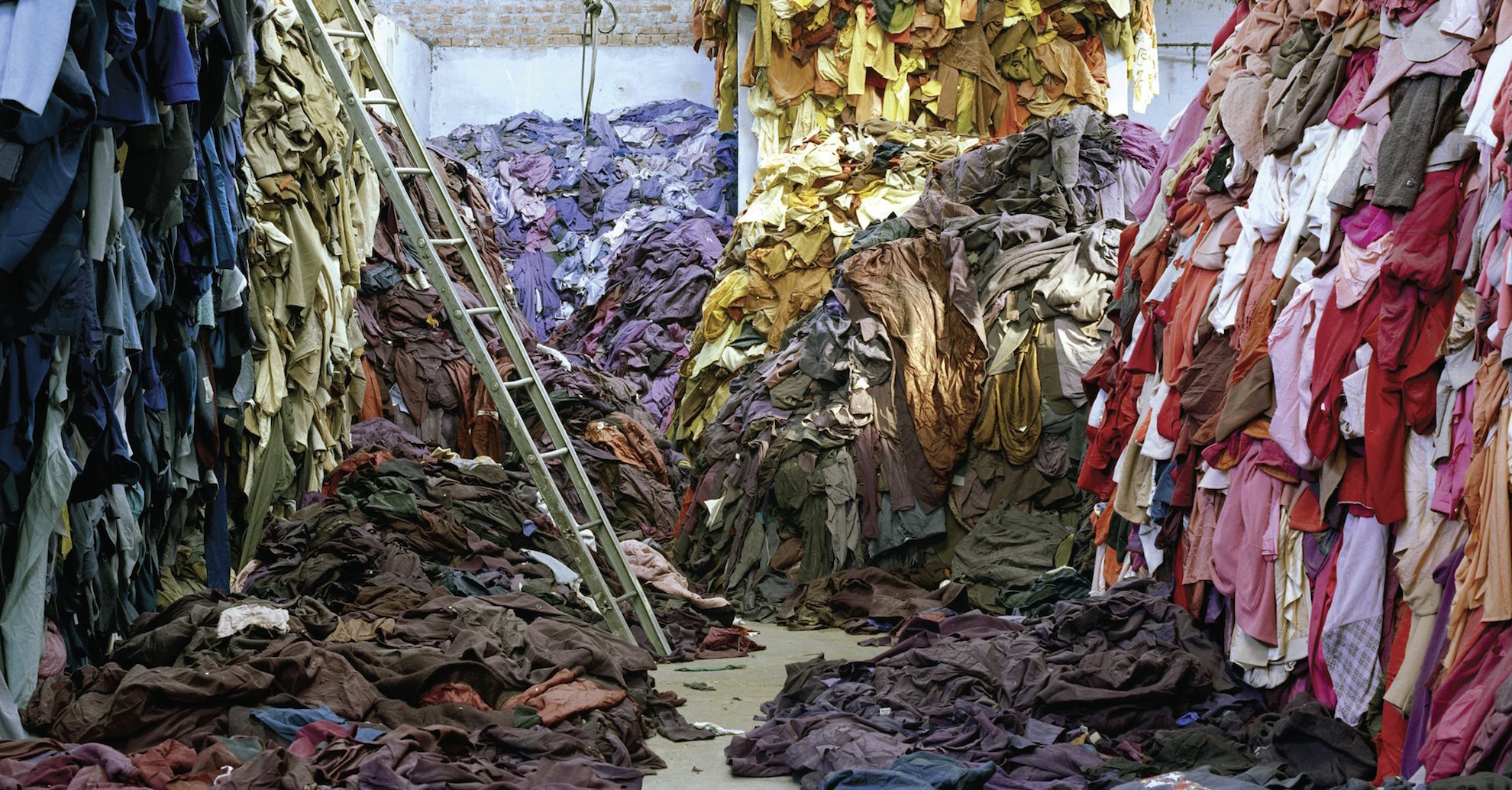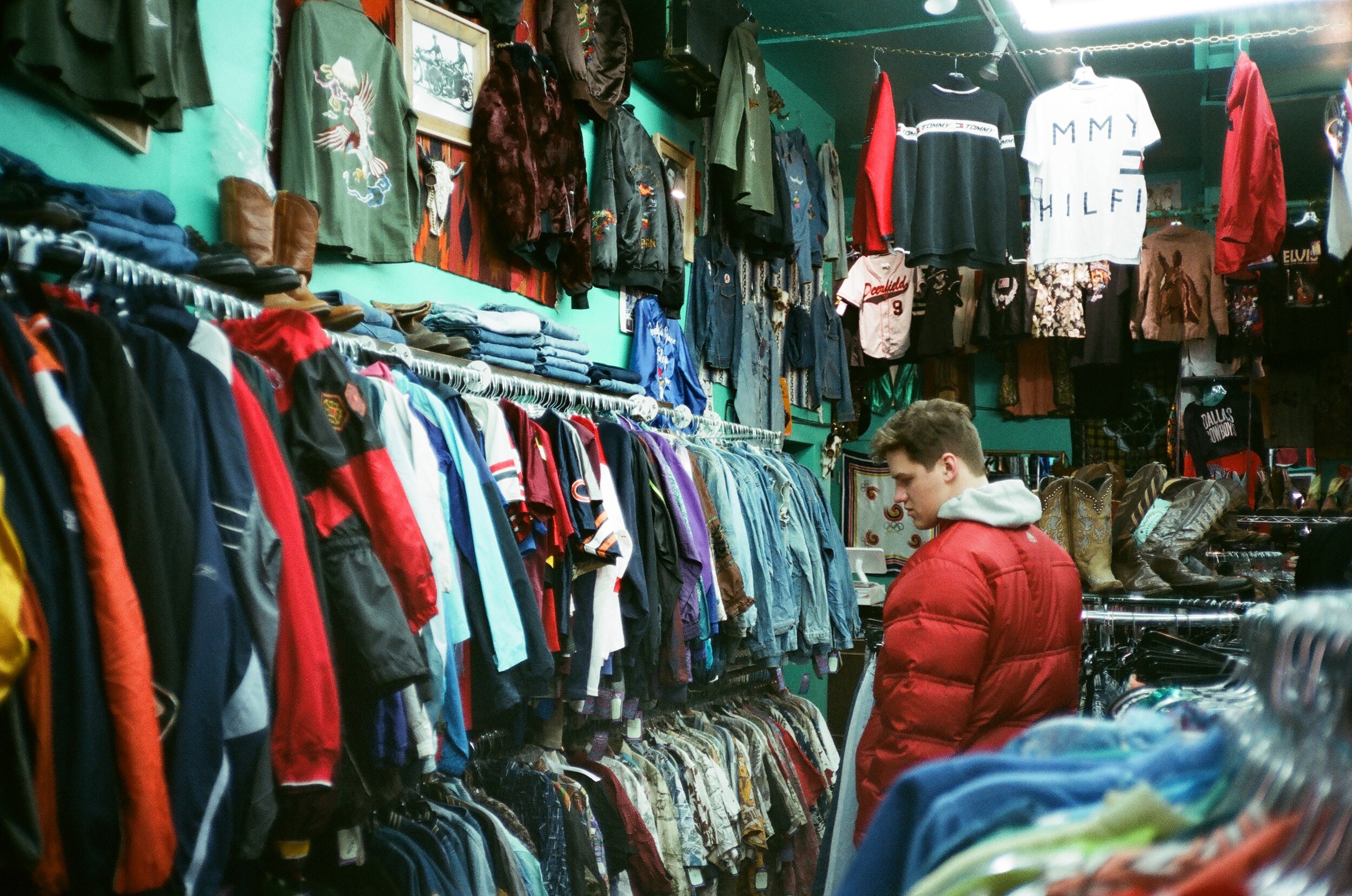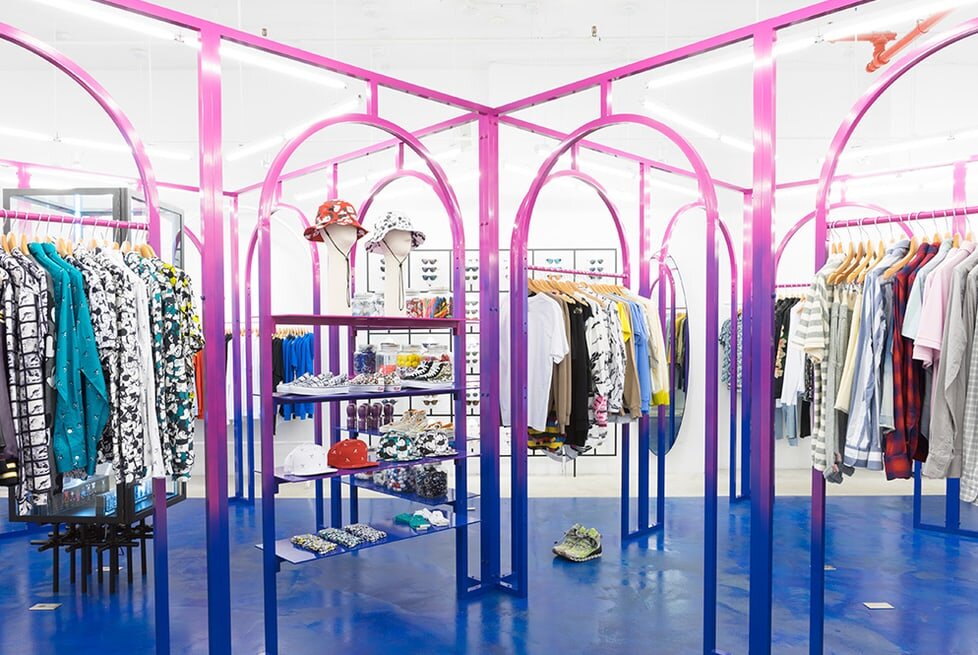
Project Background
The inception for this project originally stemmed from both of our interests in street culture, fashion, and footwear. Sam and I have been deeply invested in these industries for years now and they are something we feel very passionate about.
Furthermore, we have both been raised to strongly respect and preserve the environment. With Sam being an Eagle Scout and myself growing up in a small farm town on the coast, the environment has been integral in our upbringings.
Combined, we have worked at four different footwear and apparel companies. We first hand have witnessed why every industry has to change for a more promising and sustainable future. We want to be a part of this change.
Understanding Greenwashing
When you think “sustainable fashion,” you might be thinking of the term greenwashing.
In reality, greenwashing is not “sustainable fashion” nor does not solve anything. It’s a marketing tactic to make a brand look better without actually investing much into actual sustainable practices. It only mitigates damage done, and does not actually aim to make a change at the problem’s root. (Fletcher)
green, eco, natural, organic, compostable, low carbon footprint, repurposed, etc.
This is not what we want to do. We aim to make a change at the core of the problem. In order to do so, we had to understand the industry in all of its facets.
Grounds for Change
The statistics below put into perspective the amount fashion has had an impact on the world that we live in. Being one of the most polluting industries on the planet, it is evident change needs to be made to reduce these numbers.
(Fashion & Sustainability: Design for Change, Fletcher)
Consumer Feedback
Initially, we started out by surveying nearly 100 people in order to gain a broad understanding of people’s relationships with their clothing. Our target audience was 18-24 year olds. The two questions highlighted below stood out the most to us which helped to inform our project direction.
When do you stop wearing a piece of clothing?
How likely are you to purchase a garment if there is a story behind it?
Supplemental Research
Each book covers where the industry is now, how it’s currently changing, and what the future of it could look like. Topics covered every facet from product concept, manufacturing, sourcing, shipping, and waste. Overall, these two books established themselves as the baseline of knowledge needed with which we would continue to refer to as we progressed in our research.
We also enrolled in a 6 week online course via FutureLearn. This was hosted by the University of the Arts in London in collaboration with luxury group Kering. Brands in Kering’s portfolio include Gucci, Balenciaga, and Saint Laurent.
Identified Issues
After the completion of this preliminary research, we then consolidated our findings and categorized the issues found in the fashion industry as a whole.
In our culture, the general consensus is that “more is better.” As people want more and more, companies have to respond to that demand. The cycle continues until it reaches a point of insatiable consumption that does more harm than good to not only those involved in it, but to the environment as well.
We see this specifically in the fashion industry. Many people do not realize the massive amount of waste that goes unseen as a direct result of their consumption habits.
We feel that we should explore this issue of Consumption & Waste for the reason that us ourselves are consumers in this cycle. If we are able to apply this with the design process, we believe that we will be able to create a change in the cycle.
Interviews
We proceeded to conduct several interviews with industry professionals to gain firsthand expert feedback. Although all are not shown, the following three proved to be the most significant in the progression of our research. While conducting these, we asked specific questions regarding overconsumption in today’s society.
-

Lawrence Schlossman
“One thing that like kind of bums me out there was this idea ten years ago...this idea of timelessness, buy less buy better.”
“...setting industry standard, moving the needle a little bit, will hopefully convince other people to follow suit... [people] only caring now because of issues like climate change, they have to do something.”
-
Lawrence Schlossman is the former Brand Director at Grailed, current Throwing Fits podcast co-host, published author, and former writer for Complex Magazine.
-

Borre Akkersdijk
“Sustainability is not a question or a choice it is a given that should be a top priority by default.”
“Educating the consumer that more is not better...”
“If there are more functions to a garment the aesthetics will become a secondary function so we will buy less clothing and use the pieces we have for more situations.”
-
Borre Akkersdijk is the founder & CEO of BYBORREIn 2012, Borre was awarded the Young Designer of the Year at the Dutch Design Awards.
-

Bill Hinkle
“If you want sustainability, stop being such a consumer. Buy less...”
“I think the whole market is going to change.”
“You don’t need a whole collection... you need whatever your staples are and two or three pieces added every couple of weeks.”
-
Bill Hinkle is the Director of Design at Joseph Abboud, Mens Warehouse, and Jos. A Bank. 20+ years industry experience in custom apparel pattern cutting and design.
New York Trip
Additionally, we traveled to New York for three days to immerse ourselves in a major fashion capital to experience the high concentration of store fonts and street style. Included in this trip was our interview with Lawrence Schlossman, then Brand Director of Grailed. While here, we were given exclusive access to Grailed’s garment archive, an archive including some of the most rare and coveted pieces in the history of modern-day fashion.








Focus Problem
In nearly every interview we conducted, the general consensus was to buy less, especially when asked what the one thing the interviewee could change about the industry was.
In the adjacent quote, Lawrence Schlossman concisely summarized our focus problem. It solidified in our minds that this was the area that we aim to make a change in moving forward.
Trends have increased so rapidly in the industry that they can come and go on a weekly basis. The amount of product flooding the market both in stores and on social media feeds is unrelenting. People are constantly being fed with more options and product than they know what to do with.
“...in the past ten years that I have worked professionally in the men’s fashion industry, as a whole, the lifecycle of trends have decreased to such a point that it is encouraging conspicuous consumption to a point that is clearly too much.”
- Lawrence Schlossman
Failing Model
$4,000,000,000 in insold inventory at H&M
Stein
Although a successful business model until recently, we are starting to see the industry change overall and this model starting to fail.
In a direct result of the loss in the statistic above, H&M reported unexpected reductions in profits for the sixth straight quarter. Furthermore, H&M closed 160 stores in 2018 alone. In order to make up for this loss, the fast fashion giant is scaling back on production quantities and deal offerings. Other brands such as Zara and ASOS are also following suit. (Stein)
In a response to these losses, President of H&M North American Operations has even said, “Deals kill creativity. It’s a shortcut you do and it’s great, and next year you have to do it even bigger, and then all of a sudden, all you do is deal planning.” (Hanbury)
This “deal planning” is what further propagates the fast fashion life cycle. It is clear that in an effort to sell the massive amount of product being produced through deals, brands are starting to see the effect in their increasingly shrinking profit margins.

40% goes unworn in average wardrobes*
From the same survey as the quote above, the average consumer today purchases 60% more clothing than 20 years ago. However, they are only keeping it for half as long. (Kell)
These statistics further reinforce the need for a shift. We all are responsible as consumers for this waste. Therefore, it is our duty to create the change we need by starting to change our habits, as well as our mindsets, for the better.
*in developed countries, estimated by United Nations Economic Commission for Europe (Kell)Shifting the Model
-

Current Model
This is the current fast fashion model that many people end up feeding into. It is cyclical and self-fulfilling.
Brands produce product that is cheap and of lower quality, leading to shorter product life cycles which do not yield meaningful relationships with the wearer beyond its superficial look. Once this product fails or has become “boring” to the wearer (see survey), the product is discarded and the cycle repeats.
From a monetary standpoint, it is a successful business model. Fast fashion brands are producing plenty of product to meet the current trends and demands of the consumer, all while turning large profits. However, this is all at the expense of the damage to the environment.
-

Our Model
It is our goal that if things can be made better, can be worn more, and are able to create bonds beyond the superficial look of the garment, it will reinforce the user to feed into the current fast fashion model less.
In fact, a recent survey states that one in eight people are more likely to purchase expensive, longer lasting clothing over cheaper fashionable clothing. We see this project as an opportunity to raise this number and create a greater change. (Abdullah)
This is systemic innovation. Systemic innovation begins with a change of thought patterns and behaviors, which lead to the building of structures and practices defining and describing economic activity by ecological limits. (Fletcher)
In an effort to curb overconsumption and inspire environmentally sustainable business models for the future, we will be developing a clothing line based around quality, long lasting, and multi-functional garments that will create strong emotional connections with the wearer.
Citations
Abdulla, Hannah. “Survey Suggests Fast Fashion Is Slowing Down.” Juststyle, 19 Feb. 2019, www.just-style.com/news/survey-suggests-fast-fashion-is-slowing-down_id135630.aspx.
“Fashion and Sustainability: Design for Change by Kate Fletcher.” Goodreads, Goodreads, 21 Mar. 2012, www.goodreads.com/book/show/13529439-fashion-and-sustainability.
“Garment Manufacturing Plant.” RR Global Trading FZE, RR Global Trading FZE,rrglobaltrade.com/garment-manufacturing-plant/.
Goodison, Donna. “H&M Discards Downtown Store.” Boston Herald, Boston Herald, 18 Nov. 2018, www.bostonherald. com/2016/09/20/hm-discards-downtown-store/.
Hanbury, Mary. “H&M Is on a Mission to Make Customers Pay Full Price.” Business Insider, Business Insider, 29 Jan. 2019, www.businessinsider.com/hm-plans-get-rid-of-discounts-2019-1.
“Kate Fletcher.” IntentJournal, Intent Journal Pty LLC, www.intentjournal.com/features/kate-fletcher/.
Kell, Georg. “Can Fashion Be Sustainable?” Forbes, Forbes Magazine, 4 June 2018, www.forbes.com/sites/georgkell/2018/06/04/can-fashion-be-sustainable/#756ebd1412b7.
Manzo, Claudia. “HI TIDE IN VENICE - 28.10.2018.” Pixelrights, Claudia Manzo, claudia-manzo.pixelrights.com/albums/Wq18yb/hi-tide-in-venice-28-10-2018.
McTeague, Dan. “Keystone XL Finally Gets Presidential Respect.” GasBuddy for Business, 24 Mar. 2017, business.gasbuddy.com/keystone-xl-finally-gets-presidential-respect/.
Miranda, Luis R. “Chemical Bioaccumulation Responsible for Immunotoxicity.” The Real Agenda News, The Real Agenda News, 29 June 2017, real-agenda.com/chemical-bioaccumulation-immunotoxicity/.
“Part 2: Transforming Fashion Systems.” Fashion and Sustainability Design for Change, by Kate Fletcher and Lynda Grose, Laurence King Publishing, 2012, pp. 138–138.
Stein, Sanford. “How Could Changing Consumer Trends Affect Fast-Fashion Leaders H&M And Zara?” Forbes, Forbes Magazine, 13 Feb. 2019, www.forbes.com/sites/sanfordstein/2019/02/10/how-could-changing-consumer-trends-affect-fast-fashion-leaders-hm-and-zara/#39529c5e6f48.
“Sustainable Fashion and Textiles: Design Journeys by Kate Fletcher.” Goodreads, Goodreads, 14 Mar. 2008, www.goodreads.com/book/show/3193277-sustainable-fashion-and-textiles.
Van der Krogt, Margot. “Textile Development, Technological Innovation and Musical Intervention with Dutch Designer Borre Akkersdijk.” Freunde Von Freunden, MoreSleep, 30 Mar. 2017, www.freundevonfreunden.com/interviews/akkersdijk-borre-amsterdam-fashion-design/.
Weiner, Zoe. “H&M Is Finally Fixing This Major Problem with Their Sizing.” TODAY.com, NBC Universal, 14 June 2018, www.today.com/style/h-m-fixing-women-s-sizing-be-more-t130976.
“What Are the Alternatives to Landfill?” Open Access Government, 29 Oct. 2018, www.openaccessgovernment.org/what-are-the-alternatives-to-landfill/53719/.
Woolf, Jake. “How Tech’s Most Menswear-Obsessed Office Gets Dressed for Work.” GQ, GQ, 9 Aug. 2017, www.gq.com/story/grailed-menswear-shopping-site-office-style.
Worland, Justin. “Environment: Biodiversity Loss Could Soon Harm Humans.” Time, Time, 14 July 2016, time.com/4404981/biodiversity-study-human-welfare/.





















